Aug 28, 2010 | Architecture, Clippings, Development
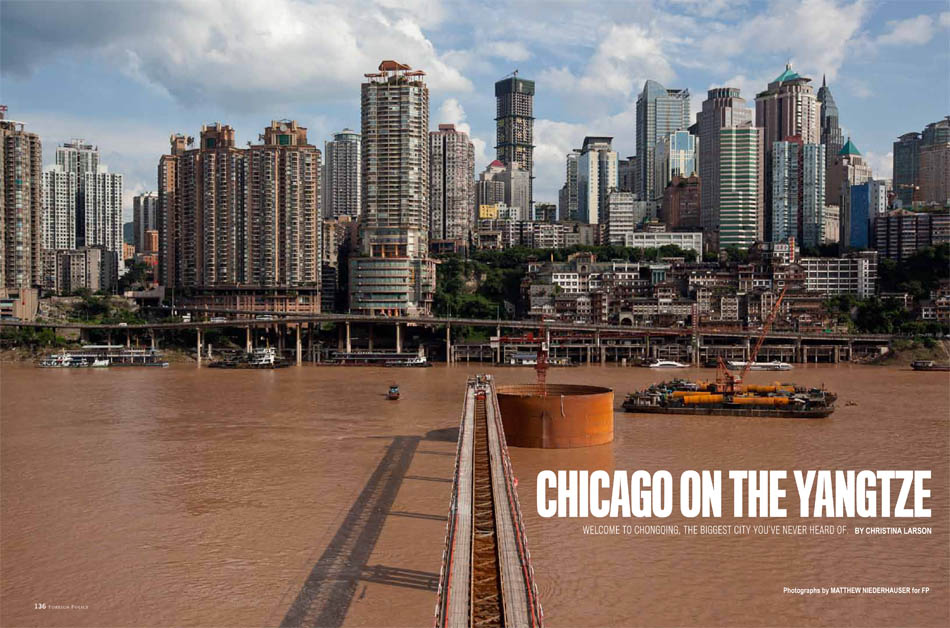
It seems that my recent photo essay on Chongqing for Foreign Policy is getting mixed up with a surge of attention focused on the fastest growing city in the world. Both James Fallows and Wired’s Raw File mentioned my work, and there is another excellent piece posted by Caixin entitled Chongqing’s Call to Urban Conversion. Chongqing is easily one of China’s (if not the world’s) greatest experiment in urbanization. How these fledgling city slickers decide to dwell in their newly minted megablocks will set new precedents for living standards across western China. It’s going to be interesting to see whether or not such rampant growth will hit a wall by 2020 when the population of the city center is supposed to reach up to 20 million people. Also, see fellow INSTITUTE artist Nadav Kandar’s photo essay Yangtze, The Long River – easily some of my favorite imagery of the beast that is Chongqing.
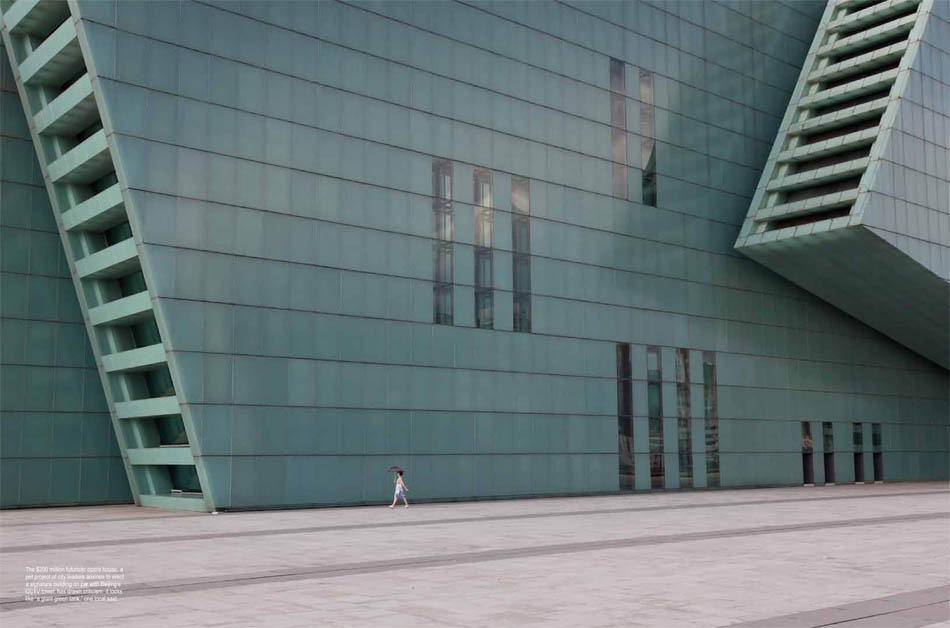
Jul 22, 2010 | Clippings, Development
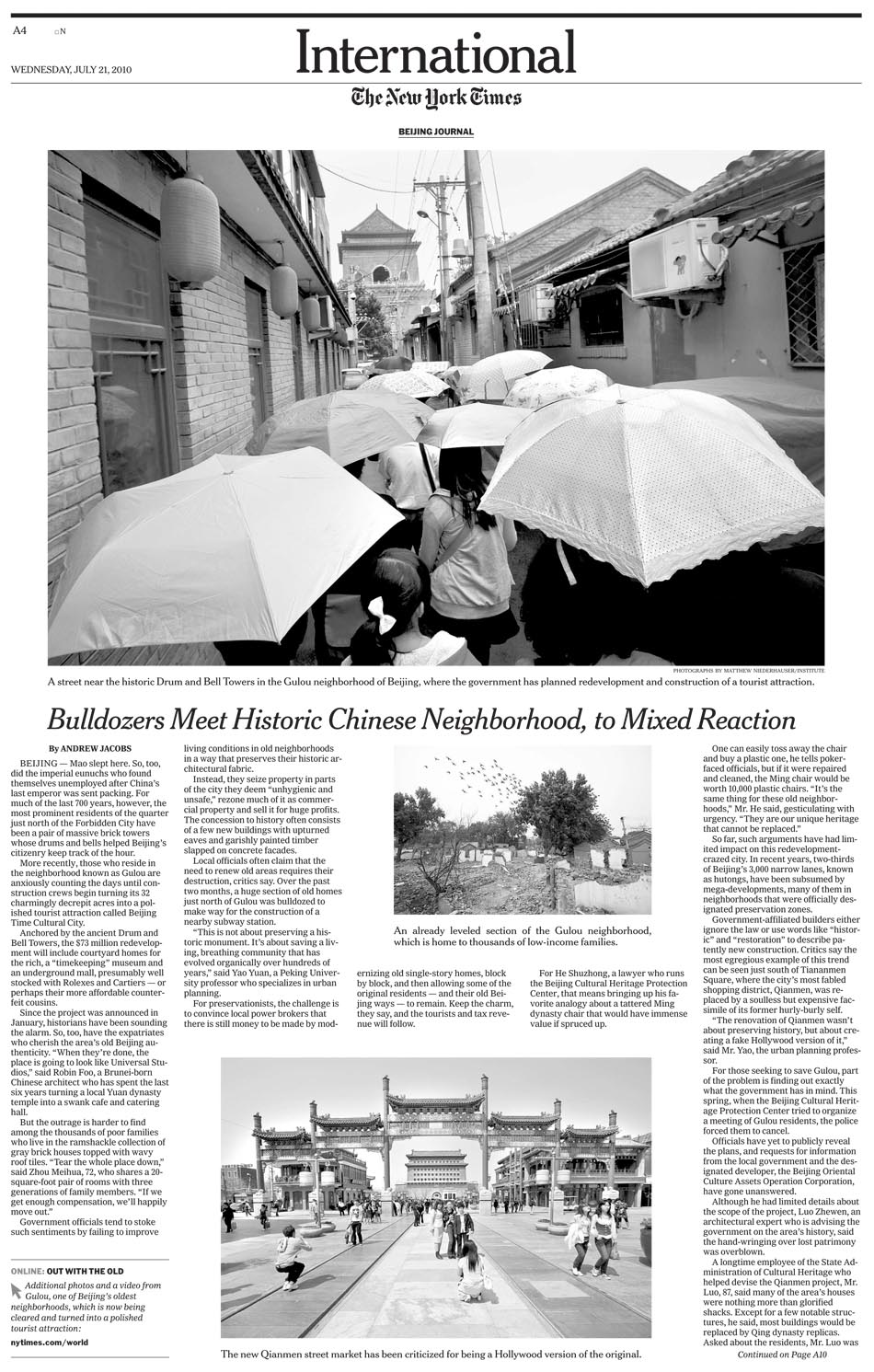
It is with great pleasure (and some sadness because of the topic) to announce the publication of my first collaboration with the New York Times. I shot both video and stills for a story concerning the upcoming redevelopment of Gulou, one of the last historic hutong neighborhoods in Beijing. Whenever I lived in Beijing over the past ten years, I always tried to locate myself in or around Gulou. It is one of my favorite places in the city and will be a great loss if the municipal government carries through with the project. Right now there are very few independent organizations that monitor and protect these hutong neighborhoods, but the best is the Beijing Cultural Heritage Project. However, with very little recourse for legal action, it seems that the developers will have their way in the long run. It is very hard to stop the juggernaut of urban development in China as city planners tend to have little care for or concept of historical preservation.
Feb 20, 2010 | Development, Travel
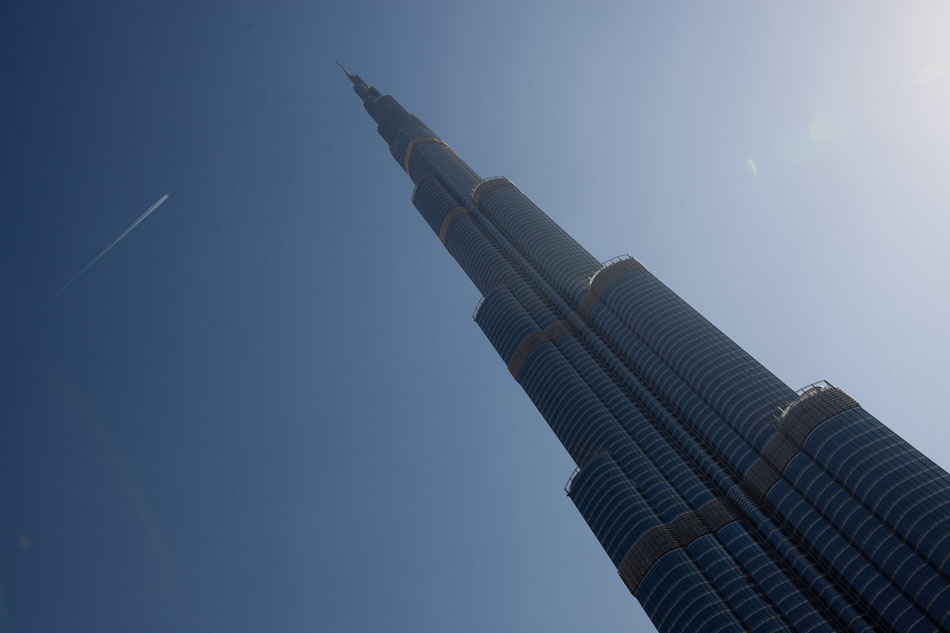
This past week I finally got to visit the developmental monstrosity that is Dubai. Nothing can really describe the audaciousness and scope of the luxury metropolis they hope to raise from the sands of the surrounding desert. Ranging from the largest mall in the world to the tallest building in the world, Dubai is building a new Babel that is already on the verge of going completely bust. For the foreseeable future however, despite the world economic downtown, the cranes are still moving as one of the largest construction sites in the world continues to lurch forward.
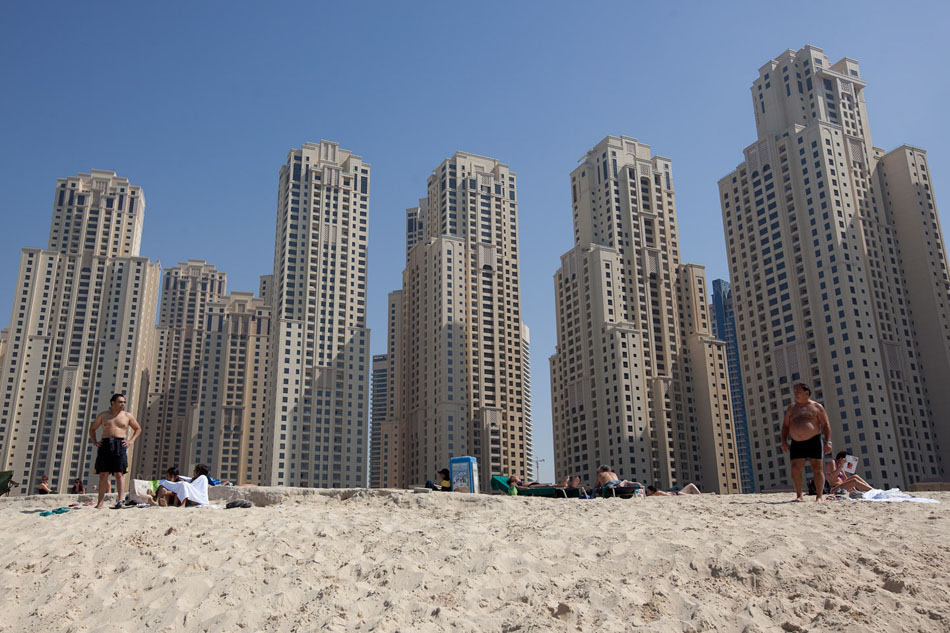



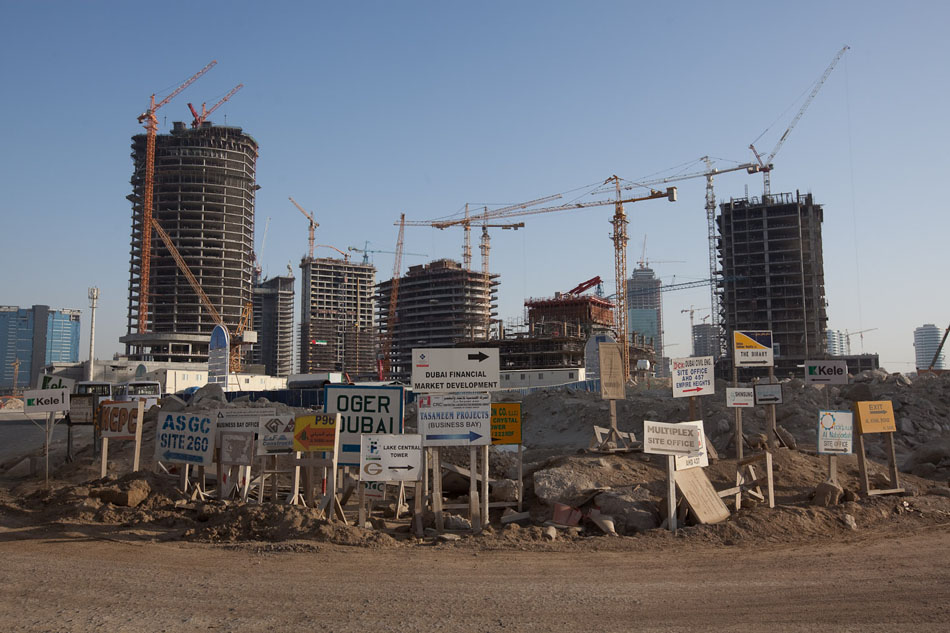
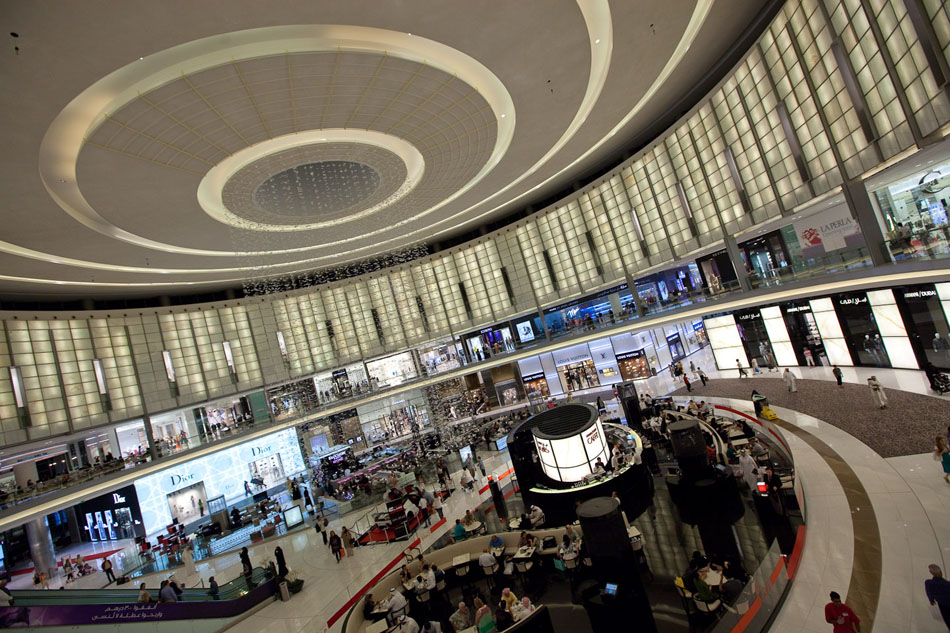

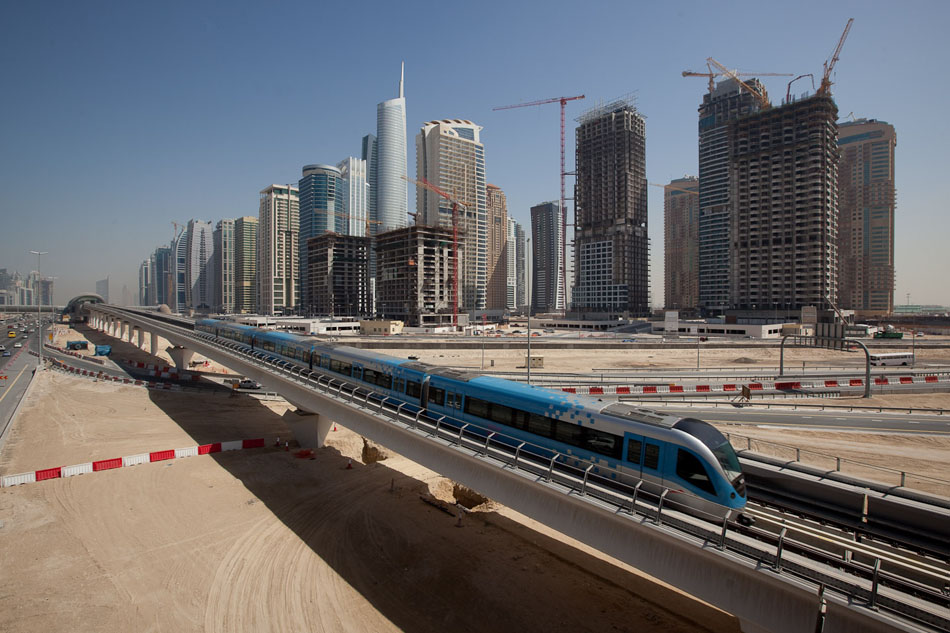
Feb 10, 2009 | Development
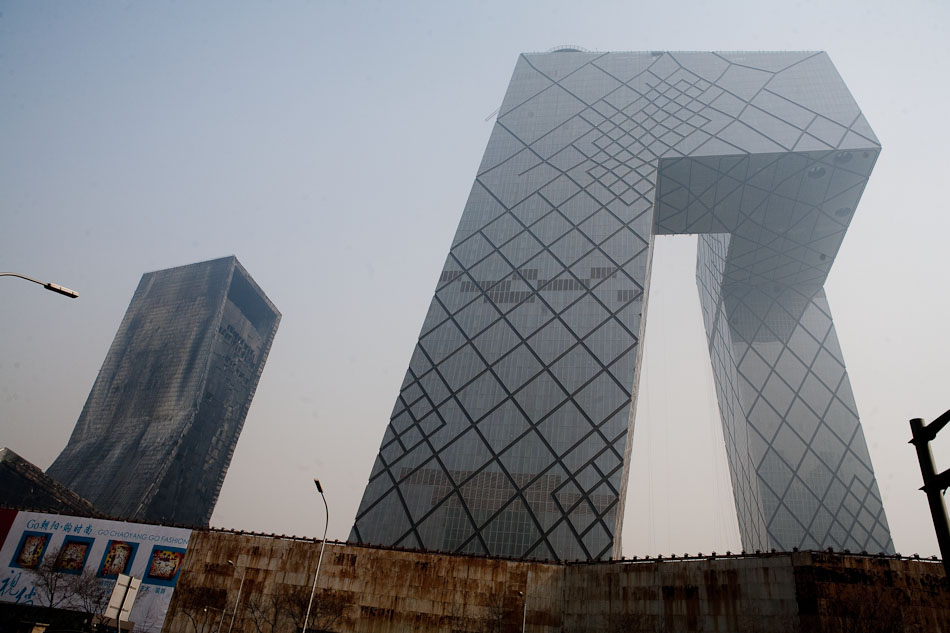
In what can only be seen as an inauspicious portent for the year to come, the Mandarin Oriental Hotel adjacent to the CCTV Tower in Beijing was gutted by a massive inferno last night just months away from its grand opening. So far a Beijing government spokesperson quoted by Xinhua News Agency is blaming the blaze on “illegal launches of fireworks.” The last day of Lunar New Year celebrations always ends with a chaotic barrage of pyrotechnics around the city. This time, however, the biggest show in town was the burning Mandarin Oriental Hotel backlit by the Year of the Ox’s first full moon.
I have no doubt that heads are going to roll after this fiasco. The Mandarin Oriental Hotel was designed by Rem Koolhaas in conjunction with the even more imposing CCTV Tower. Constructed during the 2008 Summer Olympic development boom, the complex stood for a sleek, modern image of Beijing that the Chinese Communist Party continues to paint for the rest of the world. Now the building will always be remembered for the massive fireball it turned into on Lunar New Years and the resulting charred shell standing in the middle of the Central Business District. In an unlikely turn of events, an old world celebration took down China’s new world order.
For now the Chinese media have been rather tightlipped about the situation. China’s Net Nanny was also on the prowl last night as videos posted to YouTube were temporarily blocked as well as links to articles in foreign media sources. Even local workers setting up food carts for morning commuters at 4AM across the street from the tower had no idea that a fire ravaged the building just hours before. In all, there was a general sense of shock mixed with grim acknowledgment of the highly symbolic nature of the building’s destruction.
Fortunately the Mandarin Oriental Hotel was unoccupied before the blaze, the only reported death being that of a firefighter. For now, the spinners in the Propaganda Bureau are going to have an unenviable task of trying to save as much face as possible both domestically and abroad. This is also a sad moment for me personally, as I remain a huge fan of the CCTV complex design. Now the Mandarin Oriental Hotel will be condemned and suffer the fate of the hutongs and block housing that came before.
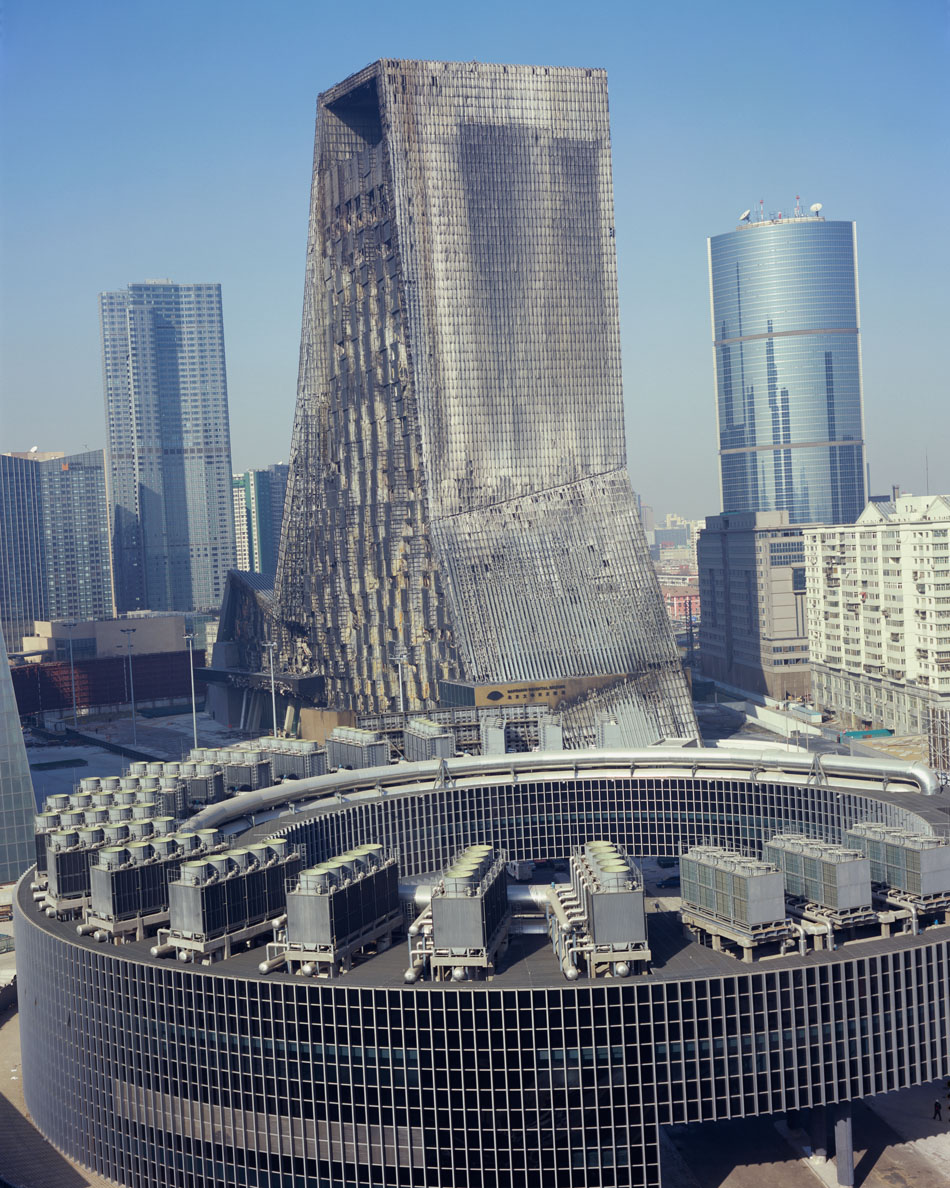
Oct 30, 2007 | Society

As urban residents wield greater purchasing power, sophisticated shopping becomes an ever-important status symbol. Those at the top of Beijing’s increasingly stratified income brackets constantly seek to distinguish themselves from the rest of the pack. Conspicuous consumptive habits thus provide instant prominence and luxury companies are scrambling to cater to and expand upon every whim and desire. Designer clothing, sports cars, and jet-set vacations become necessary additions to any ostentatious parvenu enjoying the taste of once forbidden fruits.
This weekend I bore witness to the star-studded opening of Lane Crawford’s department store in Beijing. It’s a four-story behemoth in a glitzy mall and only stocks vogue international fashion designers. Apparently Beijing has stepped into the sartorial big leagues. Whether or not the store will make money is another question. Beijing doesn’t exude pretentious airs quite like Shanghai or Hong Kong yet. Local shoppers prefer to browse the racks and then hit the streets in search of similar black-market counterfeits. Still, this won’t stop major luxury brands vying to cash in on Beijing’s nouveau riche and their swelling materialistic obsessions. Too much is at stake in this potential market.
Unfortunately sipping on Moet all evening and ogling $5,000 USD Raf Simmons leather jackets can only provide so much enjoyment. Such prices smack of insolence considering the average income of rural farmers in China still tops out at around $225 USD per year according to the Xinhua News Agency. Even most city dwellers who average $750 USD per year would be left out of the commodity feeding frenzy occurring in department stores across Beijing. Many disenfranchised economic groups are starting to take action though, and the Chinese state is starting to realize the vast potential of widespread social unrest if income gaps continue to widen in favor of those already lining their closets with Givenchy, Paul Smith, and Prada. Even though the potential for a luxury backlash looms ever on the horizon, for now nothing seems to stand in the way of these corporate giants.
See “China’s hunger for luxury goods grows” for an excellent description of Chinese yuppies aka chippies.
















